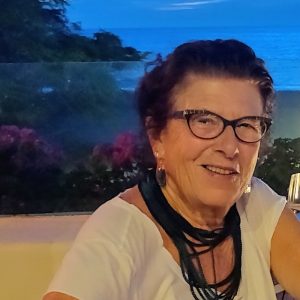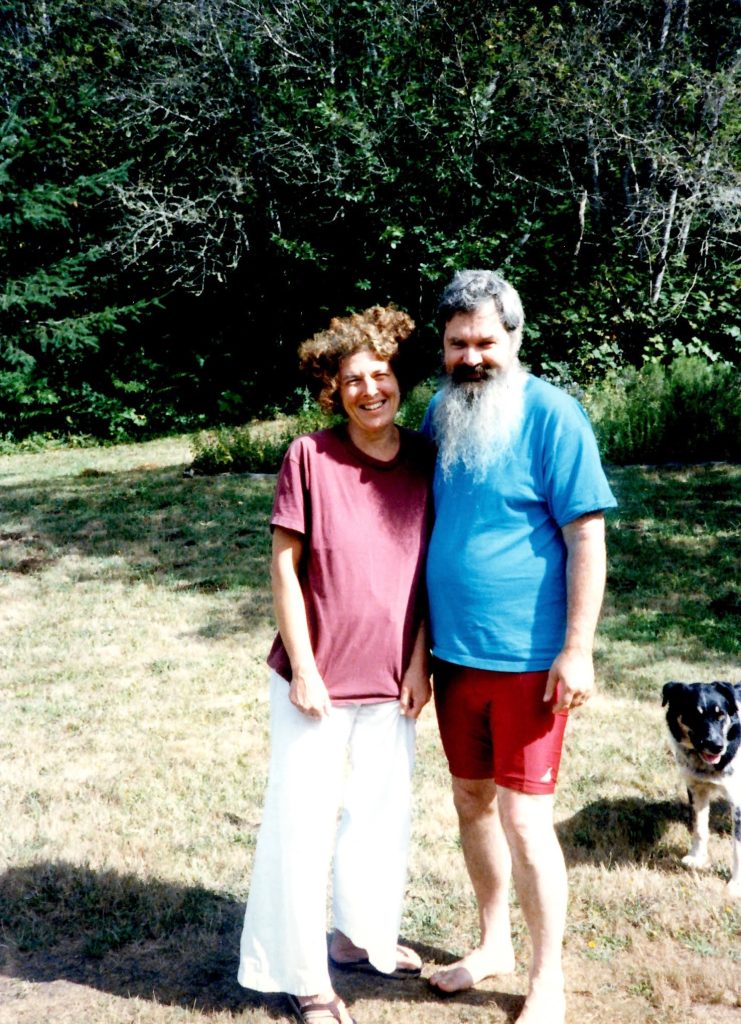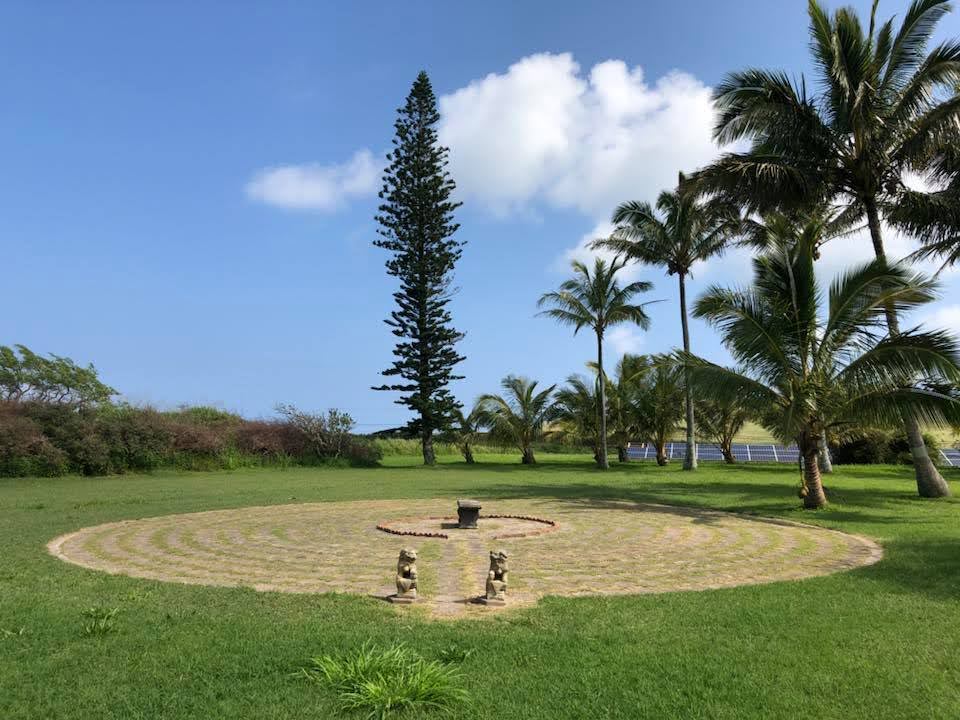
We Are Spiritual Beings on a Human Journey – An Interview with Board Member Peggy Brevoort
Tell us about yourself
I grew up on the East Coast: New York City and suburbs. I was raised as a Presbyterian and always felt drawn to church and the rituals, but Christianity never seemed to satisfactorily answer my inner questions about life. When I first began reading about Buddhism, it resonated immediately because there were answers I could apply to my life: a clear explanation of cause and effect. Why should we be “good”? Not simply to please God, but because we immediately would spread and receive goodness in return.
Now this was 1960 something…so Buddhism was still a bit “thin on the ground” in Western culture. We all read “Be Here Now” among other things…and went searching.
My story is intrinsically wound with that of my late husband, Bill Brevoort (Kuo Ying). So his part will keep coming up in this narrative. After he completed graduate school in NYC, we ended up in Eugene, OR where he taught painting and sculpture at the University of Oregon for two years. We then had two small children, Gretchen and Joshua. We became “drop-out” hippies (not hard in 1969) and went to live at Yashodara Yoga Ashram in remote British Columbia, Canada. This was life changing because we were taught how to integrate a spiritual practice into our daily lives: meditation, vegetarian diet, working as a form of “karmic yoga”. Canada was too cold, so we moved back to Oregon (where I had many family connections) and bought Buddha Root Farm in 1971. Our motive was to continue to incorporate spiritual practice into our daily lives and raise our children somewhat removed from mainstream culture. Even at the time of purchasing the property, we both knew that it was for a reason we at that time still didn’t understand, that in a sense we were holding it for a future purpose.

Bill was very very passionate about his cultivation and went searching for a spiritual teacher (before the internet). He had heard about Master Hua and Golden Mountain Monastery in San Francisco, so off we went to explore. The first time we as a family walked in, two things happened. Bill saw the picture of Master Xu Yun, Shr Fu’s teacher on the wall and knew he had come to the right place. Myself and our children felt a bit overwhelmed until DM Heng Chih came forward with a beautiful smile and warm greeting of welcome, inviting us in to join lunch and be at ease. I am still moved when I think of that welcome.
Bill later invited Shr Fu to Eugene, OR to lecture and then announced that we needed to host a week’s retreat on our property. OK…. fortunately a year’s worth of cooking vegetarian meals for 30 or 40 people every day at Yashodara Ashram had me trained to manage meals for 50 out of our 10×10 trailer kitchen-with the gracious help and hard work of half a dozen women from Gold Mountain. That was when I met Helen Woo. Most people camped; we put Shr Fu in a tiny travel trailer. We had worked for weeks ahead of time clearing land and building a shelter for the first Buddha Root Farm session. Everyone pitched in and helped during the week; it rained a bit; we had to cross a river on stepping stones to get to the lectures and meditations. You can read the rest in the book, Buddha Root Farm. It felt like absolutely the perfect thing to be doing on our land. I mostly remember working pretty hard, but I do remember each morning I would go to our garden (we were partly feeding people from the garden). I had a large flower garden as well and I would pick a large bouquet to bring to Shr Fu when I went to discuss the daily meals and schedule. I do swear the flowers that week were beyond magnificent as if they were waiting their turn to be offered to him.
From there Bill and I went on to found and grow an herb company, East Earth Herb, Inc. We ended up producing standardized herbal extracts and Chinese herbal formulas which we distributed around the world. We sold the company and retired to Hawaii in 1999.
During the time we were involved in the herbal business, I branched out to become immersed in the natural product trade associations and served as Chair of the Board of the American Herbal Products Association from 1990 to 1994 when the industry was in a huge growth curve. I needed market information and found there was none, so I began to research and for a while became a world expert on “The American Market for Medicinal Botanicals.” I traveled to many places around the world to lecture. Through all these various points in my life I have learned that no matter what it is you are doing/learning there is always a reason; each step in life is a preparation for the next one.
How does the DRBU mission resonate/relate with your way of life?
Buddhism has been one of my guiding tenets throughout my adult life. A touch stone to remember when making hard decisions about life choices. I wish there had been a DRBU when I was going to school. The concept of a place of retreat where questions about life are posed and discussed and answered through discussion and reading and self-contemplation would have been quite a gift. I have lived most of my life in a time of peace and prosperity (In spite of the many civil struggles and ongoing wars and conflicts many people I know have had very fortunate lives). In the luxury of this environment people have the opportunity to evolve as human beings. I believe humans have a natural tendency toward spiritual practice and seek it out. DRBU offers this opportunity to grow as humans. Even in times of great stress and difficulty, the environment at DRBU offers a way through.
What inspires/motivates you as an individual?
My passions in life have centered around plants and herbal medicines (a view of the world from a more “natural” perspective) as well as the need for  some way of on-going contemplative/inner work. I have been trained in Feng Shui and other types of energetic work. I have also been immersed in the community of the Labyrinth (not to be confused with a Maze, a Labyrinth is defined as a single circuitous path leading to a center and allowing return by the same path). I have built labyrinths and am trained to facilitate labyrinth walks and work. The discovery for me is that this is all interconnected. The human world, the plant world, the world of the Buddhas and Bodhisattvas is all intertwined. One of the things I love about Labyrinth work is how walking labyrinth gives us a moment to experience that interconnectedness. And of course, Buddhist practice also can take us to that understanding.
some way of on-going contemplative/inner work. I have been trained in Feng Shui and other types of energetic work. I have also been immersed in the community of the Labyrinth (not to be confused with a Maze, a Labyrinth is defined as a single circuitous path leading to a center and allowing return by the same path). I have built labyrinths and am trained to facilitate labyrinth walks and work. The discovery for me is that this is all interconnected. The human world, the plant world, the world of the Buddhas and Bodhisattvas is all intertwined. One of the things I love about Labyrinth work is how walking labyrinth gives us a moment to experience that interconnectedness. And of course, Buddhist practice also can take us to that understanding.
What does a meaningful or fulfilled life look like to you?
I think I have led and am leading a pretty meaningful and fulfilled life. I am very blessed. I had a long and fulfilling marriage. I have two grown children of whom I am very proud and still watch with a bit of amazement. I also have one grown grandson, and friends around the world. I followed several of my dreams: to drop off of mainstream society in the 60’s, to be recognized as a professional within a field of work that I love, to feel I have made a very small contribution to changing the world (through my advocacy for natural medicine), to have the means and opportunity to pursue new passions and curiosities, and to have found a path of spiritual practice that continues to unfold and surprise me. There are also things I have not done, and perhaps part of a full life includes looking to those things yet to be explored.
What message would you share with today’s world?
We are living in one of the most stressful times in our history. There have always been and always will be individual or country wide or cultural wide times of stress and difficulties. This current challenging situation is worldwide in a world that has never been more connected thanks to travel, internet, and other forms of communication. Granted the 1st and 2nd World Wars were similar in scope, but here we are all more or less united against a common “enemy”. We are all being forced to change many of our basic patterns of life; forced to spend time apart from our fellow humans (and perhaps more than enough time with our immediate families!). There is nowhere to turn but inward! What an opportunity! What a difficult task! But I believe that in the darkest moments the greatest light can emerge. I am amazed at the resilience of people to keep on keeping on. So my advice would be seize the moment and go with the change. I like the analogy of the humble caterpillar emerging into the soaring butterfly.